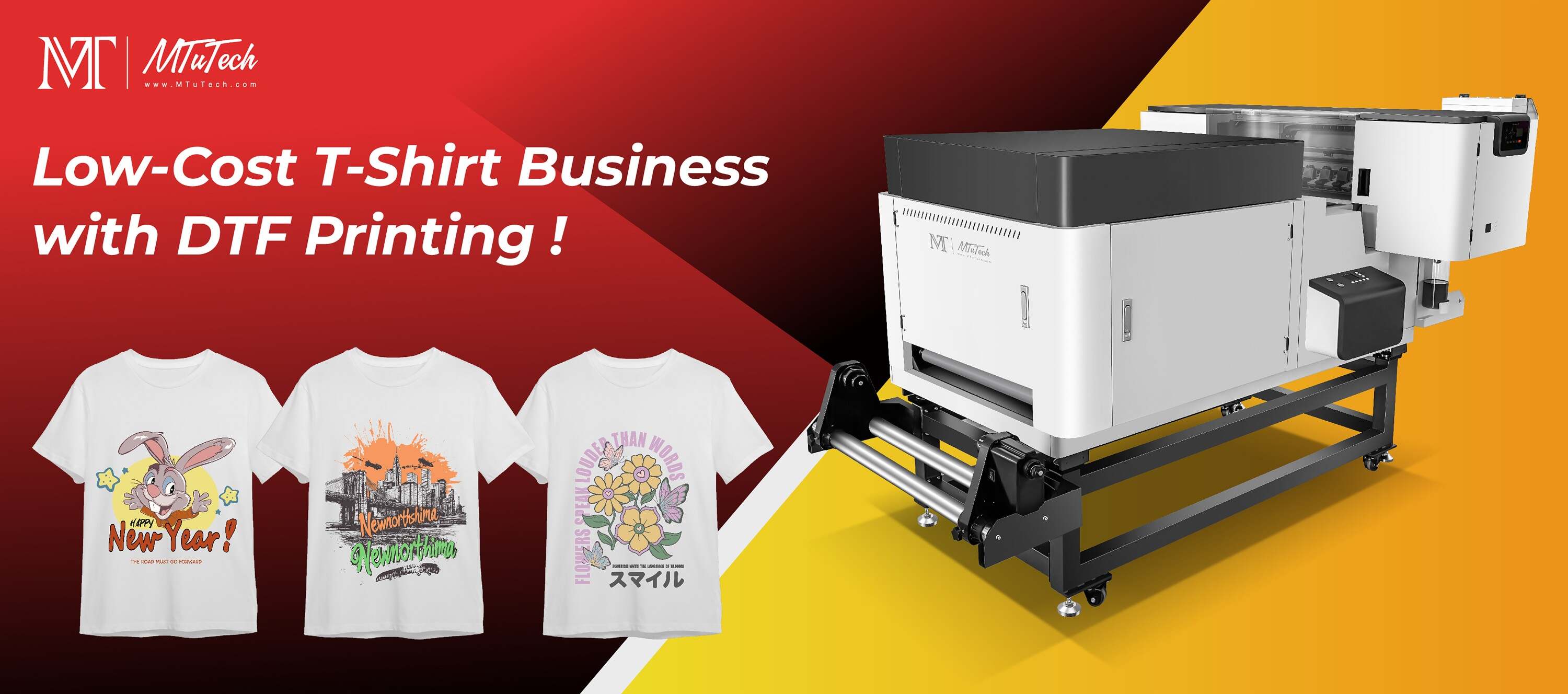Introduction
Direct-to-Film (DTF) printing has revolutionized the way custom garments and apparel are produced. With its growing popularity, many aspiring entrepreneurs and established businesses are looking into DTF printer kits to streamline their printing processes. But what exactly is a DTF printer kit? In this blog post, we will explore the essence of DTF printer kits, their benefits, features, and how they can elevate your printing business.
What is a DTF Printer Kit?
A DTF printer kit is a complete package designed to allow users to create custom prints on various materials, primarily fabrics. This kit typically includes a DTF printer, transfer film, inks, adhesive powder, and a heat press or a compatible curing system. DTF printing works by printing designs on a special film, which is then applied to the fabric using heat and pressure, resulting in vibrant, durable prints.
Benefits of Using a DTF Printer Kit
1. Versatility
DTF printers are incredibly versatile. They can print on a variety of materials, including cotton, polyester, denim, and more. This means businesses can cater to a broader audience by offering diverse products.
2. High-Quality Prints
DTF printing produces high-resolution images with vibrant colors and fine details. The method is particularly effective for complex designs and photographs, ensuring that every print meets high-quality standards.
3. Cost-Effective
Investing in a DTF printer kit can lead to significant cost savings over time. Unlike traditional screen printing, which requires multiple screens for multi-color designs, DTF printing allows for easy color changes without additional costs.
4. Easy to Use
Most DTF printer kits come with comprehensive instructions, making them user-friendly for beginners. Whether you are a hobbyist or a professional, these kits provide an accessible entry point into the world of custom printing.
5. Minimal Waste
Since DTF printing allows for efficient use of materials, there is less waste compared to other printing methods. This makes it a more environmentally friendly option.
Key Features of DTF Printer Kits
1. High-Performance DTF Printer
The cornerstone of any DTF printer kit is the printer itself. These printers are designed to handle specific inks and films, ensuring quality results. Look for features such as:
High DPI (Dots Per Inch) capability for detailed prints
Wide color gamut for vibrant colors
Fast printing speeds to enhance productivity
2. Quality Transfer Films
DTF kits come with specially designed transfer films that help transfer designs onto fabrics. These films are crucial to achieving a successful print and should be durable and compatible with the inks used in the printer.
3. Adhesive Powder
Adhesive powder is used to bind the ink to the fabric during the transfer process. The quality of this powder can affect the longevity and durability of the print, making it an essential component of any DTF printer kit.
4. Heat Press or Curing System
A heat press or curing system is required to activate the adhesive and permanently bond the ink to the fabric. Many kits come with this equipment, ensuring that you have everything you need to start printing.
How to Choose the Right DTF Printer Kit
When selecting a DTF printer kit, consider the following factors:
Budget: Determine your budget and look for kits that offer maximum value for your investment.
Production Needs: Assess your printing volume and types of products. Some printers are better suited for high-volume production.
Support and Training: Opt for a kit that provides excellent customer support and resources to help you get started.
Brand Reputation: Research reputable brands known for their quality products and reliability in the DTF printing space.
Setting Up Your DTF Printer Kit
Once you've chosen a DTF printer kit, setting it up involves several key steps:
1. Unboxing and Inspection
Carefully unbox your printer kit and inspect all the components. Ensure that everything is present and in working order before proceeding.
2. Installation
Follow the manufacturer’s installation instructions for your printer, heat press, and any other components included in the kit. Proper installation is crucial for optimal performance.
3. Software Setup
Install the necessary software on your computer to operate the printer. This software will allow you to create and manage designs for printing.
4. Test Prints
Before diving into full-scale production, conduct several test prints. This step will help you adjust settings for different materials and designs, ensuring high-quality outputs.
Conclusion
DTF printer kits are a fantastic investment for anyone interested in custom apparel printing. Their versatility, high-quality outputs, and cost-effectiveness make them a wise choice for both startups and established businesses. By understanding the features, benefits, and setup processes, you can harness the power of DTF printing to create stunning products that will wow your customers. Explore our high-quality DTF printers here to begin your printing journey today!
FAQ
What types of fabrics can be printed with a DTF printer?
DTF printers can print on a range of fabrics, including cotton, polyester, blends, and even some synthetic fabrics. This makes them suitable for a variety of apparel and textile products.
Can I use a DTF printer for white ink printing?
Yes, DTF printing is compatible with white inks, allowing designs to be printed on darker fabrics. This feature is one of the reasons DTF is favored for printing on diverse color materials.
Are DTF prints durable?
Yes, DTF prints are known for their durability. When properly cured and applied, they can withstand regular wash cycles without fading or peeling, making them ideal for everyday wear.
Do I need special training to use a DTF printer?
While some technical knowledge can help, most DTF printer kits are designed to be user-friendly. Many manufacturers provide training materials and customer support to assist beginners.
What maintenance is required for a DTF printer?
Regular maintenance includes cleaning the printhead, checking ink levels, and calibrating the printer. Following the manufacturer’s guidelines will ensure the longevity and performance of your printer.

